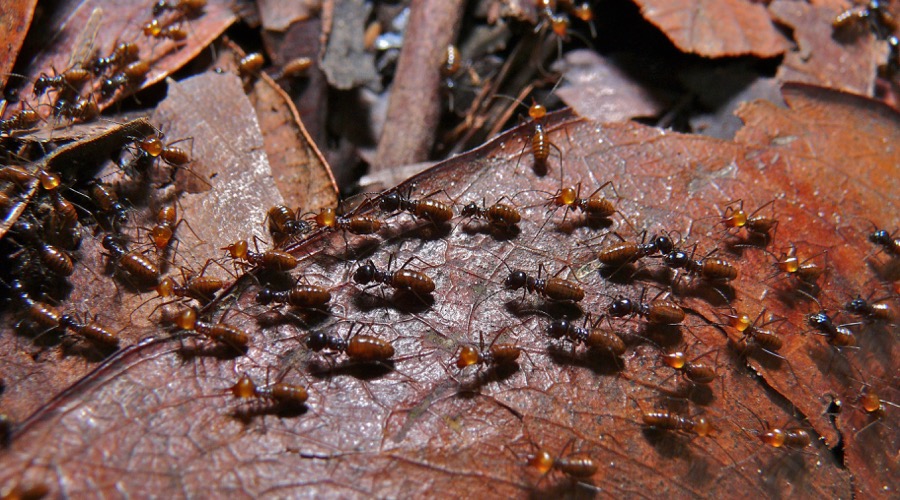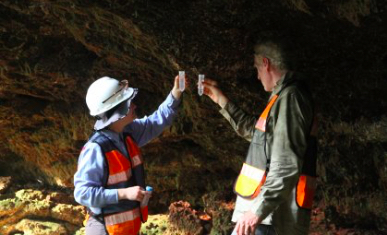
Researchers from the University of Queensland, in collaboration with mining giant Vale (NYSE:VALE), have found that the use of termite guts could contribute to mining site rehabilitation and pay big dividends for the planet.
The team of experts focused their studies on the method to promote formation of a type of iron cement crust — known as canga — that naturally forms a protective layer over the top of iron ores.
University of Queensland School of Earth Sciences researcher Dr. Emma Gagen explained that, during the mining process, canga is broken up and moved away to access the underlying ore. She said the project she is leading is looking at ways to speed-up its reformation after mining.

Researchers inside a canga cave. (Image courtesy of The University of Queensland)
“This would allow for specialized indigenous plants which grow on canga and are critical for biodiversity to be re-established faster,” Gage said in a statement. “We are pursuing a number of lines of inquiry into microbe-mineral interactions, but one line investigates the gut of termites that build nests in and over canga.”
According to Professor Gordon Southam, one of the project’s leaders, the university-industry collaboration would produce economic benefits for the world’s iron mining industry through advanced training in mining-related research, and through the completion of the mining life cycle by site remediation.
“This will enhance Australia’s position as a global leader in providing innovative solutions to today’s mining challenges,” he said.
As a next step, the team plans to set a field trial in Brazil where they will develop a bio-remediation strategy for iron ores by re-establishing canga.